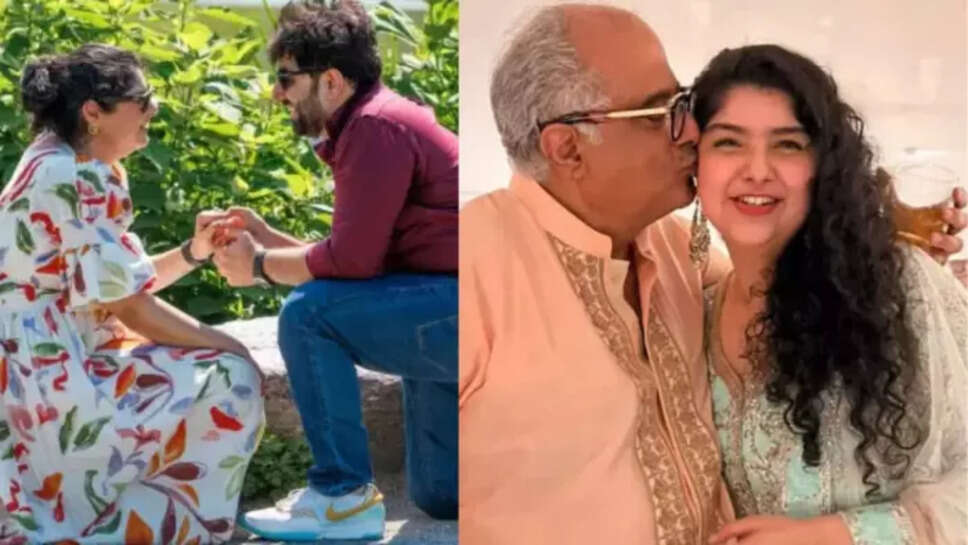Why Children Blame Themselves for Their Parents’ Breakup: Lessons from Anshula Kapoor’s Story

Anshula Kapoor’s recent reflections on her childhood and the emotional turbulence following her parents’ separation have sparked a broader, much-needed conversation — about how children, often silently, shoulder the blame for the choices of the adults around them. Her candid revelations, particularly the way things changed after her half-sister Janhvi Kapoor was born, expose a painful yet common truth: when families break apart, children frequently internalise the fallout.
In a society that still tiptoes around divorce and fractured families, Anshula’s voice brings empathy and understanding to a complex psychological space. Through her lens, we gain insight into how children rationalise chaos, seek meaning in dysfunction, and all too often turn inward — assuming fault for the rifts they neither caused nor fully understand.
‘It Became More Apparent After Janhvi Was Born’
Anshula, the daughter of celebrated film producer Boney Kapoor and his first wife Mona Kapoor, grew up in a family that, from the outside, appeared privileged and stable. But the reality was more complicated. Her father’s second marriage to iconic actress Sridevi and the arrival of Janhvi and Khushi Kapoor created a new dynamic — one that inadvertently deepened Anshula’s sense of displacement.
In interviews, Anshula has gently but honestly spoken about how the emotional landscape changed after Janhvi was born. Though she never blames her half-siblings, the very existence of a second family made her confront emotions she had buried: confusion, sadness, and a vague, haunting sense of not being “enough” to hold her parents’ marriage together.
This reaction isn’t unique to her. It echoes what countless children experience during and after their parents' separation. The sudden shift in attention, the realignment of affection, and the sense of being on the outside looking in — these feelings breed a subtle but dangerous belief: Maybe I was the problem.
The Psychology of Self-Blame in Children of Divorce
Children are emotionally intuitive but cognitively limited when it comes to understanding complex adult relationships. When parents fight, separate, or remarry, children look for a reason — and because they are still developing emotionally, they often conclude that they themselves must have done something wrong.
This is especially true in situations where transparency is lacking. If children aren’t guided through the breakup with reassurance and clear communication, they’re left to fill in the blanks. Silence, secrecy, and emotional coldness become breeding grounds for misinterpretation.
In Anshula’s case, the changing structure of her family likely led her to question her own role. Was she not enough? Did she do something to make her father leave? Did her existence not fulfill him? These are questions no child should have to ask — and yet, millions do, quietly, every day.
Sibling Dynamics and Emotional Shifts
The arrival of new siblings in a blended family can intensify these emotions. For Anshula, Janhvi’s birth wasn’t just about a baby — it symbolised a new beginning for her father, one she wasn’t part of. While it’s clear that Anshula now shares a cordial, even warm relationship with her half-sisters, her emotional processing as a child would have been far more complex.
Many children of divorce report feeling “replaced” when a parent starts a new family. It reinforces the notion that something was lacking in the first setup. If a parent moves on seamlessly, it can make the child feel as though the life they had shared wasn’t meaningful or important enough to preserve.
In homes where parents struggle to balance attention between children from different relationships, the imbalance can further aggravate this perceived inadequacy. Even without words, children pick up on affection, presence, and tone. When these shift, they internalise the change.
Anshula’s Emotional Maturity: Healing in Adulthood
What stands out in Anshula’s story is not just the pain, but her willingness to confront it. Rather than bury her feelings or lash out, she chose to explore them — and in doing so, she’s become a voice for many others who were too young to process what happened and too afraid to speak about it.
Over time, Anshula has rebuilt her understanding of family. She now maintains a bond with her father, cherishes the love of her late mother Mona, and has developed ties with Janhvi and Khushi. Her healing journey hasn’t been linear, but it’s been honest.
She also speaks openly about therapy, self-worth, and emotional vulnerability — all topics that were once taboo in Indian families, especially among public figures. In doing so, she’s helping shift the conversation, making space for children of divorce to acknowledge their pain and pursue healing without shame.
What Parents Need to Understand
Anshula’s reflections offer lessons for parents navigating separation. First and foremost: children are not blind. They see, hear, and feel far more than adults realise. Shielding them from the truth isn’t always protection — sometimes, it’s a barrier to healing.
Clear communication, repeated reassurance, and unconditional presence can go a long way in preventing the seeds of self-blame from taking root. It’s vital for parents to remind their children, consistently, that the decision to separate had nothing to do with them. That they are loved, wanted, and cherished — regardless of who lives under which roof.
It’s also essential for parents to model emotional honesty. Acknowledging their own struggles in an age-appropriate way teaches children that feelings are valid, manageable, and worthy of discussion. Suppressing emotions — or worse, projecting guilt onto the child — causes long-term emotional scarring.
From Silence to Strength
Anshula Kapoor’s story is one of resilience. It’s about turning confusion into clarity, pain into purpose. Her words are a reminder that children of broken homes often carry silent wounds — but they also carry extraordinary strength.
Her journey encourages us to look closer at the inner world of a child navigating divorce, to ask how they’re really feeling, to validate their fears, and to tell them — again and again — that love doesn’t disappear just because relationships change.
In her quiet strength, Anshula has shown that even the deepest emotional fractures can heal. Not by pretending they never happened, but by acknowledging them, understanding them, and finding meaning in the struggle.
And maybe that’s the greatest gift any child of divorce can give the world: the courage to speak the truth, and the grace to grow beyond it.
